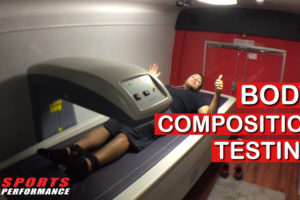
A comprehensive guide on not panicking when you feel sharp pain in your back, knee, neck, shoulder, hip, elbow, wrist, ankle, or pinky finger.
A few weeks ago, I was in the middle of a pretty hard training cycle: high volume squats that had been getting heavier by the week. I had been slowly, but steadily increasing my squat volume, my diet was on point, I was sleeping relatively well, training only 4 days per week to allow for adequate recovery, and my stress levels were pretty reasonable. Despite all of the things I had going for me, I came out of one of my last squats and felt the front of my knee cap pull sort of weird and got some sharp pain that stuck around after the workout. The entire next day, it hurt to put weight through a bent knee (i.e. every time I demonstrated a squat to my clients, or knelt down to get to the ground).
Naturally I panicked, decided that my patellar tendon had probably been irreparably ruptured, and wondered if I would ever be able to squat again, or if not, how I would be able to stay in shape or help my clients if I couldn’t even do an air squat without pain. Conveniently, panicked me very quickly pulled it together and thought about what I would tell a client who came in with the same issues, which is most certainly NOT “I’m sorry, your tendon is just busted, you’ll probably never be able to squat again, so please avoid squatting forever.”
Fortunately, the tweak was gone within 72 hours and I was squatting again with no problems, but I realized that part of my quick turnaround was because I was armed with the knowledge on what to do with a tweak. It is time to share that with you so that you can be more empowered to self-manage your tweaks and stay on track with your fitness goals.
When you experience a tweak…..
- Don’t Panic
Tweaks are a normal part of any training routine and they cannot ever fully be avoided, no matter how intelligently you train/recover/fuel. However, one of the best ways to make your pain worse is to think about all the ways it will derail your life and training goals. This is called “catastrophizing,” and not only is it inaccurate, but it can be highly detrimental to your healing. The more that you think about how “broken” you are, the more your nervous system will do to “protect” you. This means lower pain thresholds, decreased function, decreased motivation to move the affected area.
So do yourself a favor, understand that the magnitude of pain isn’t necessarily a measure of the magnitude of your injury, keep moving, and focus on all of the things that you can still do without pain (i.e. a different version of that movement, cardio, nearly everything else that brings you happiness in your life).
2. Decrease the intensity and retry the movement.
Sometimes the tweak happens at high intensity (i.e. high weight on a bar, or during a fast sprint) and we think “Uh oh, I felt my back twinge on this lift, I’m just going to put all of the weights away and call it a day.” This might not be the best option. The twinge that you felt could very easily have been your body’s way of telling you that the intensity was too much (as opposed to a cry of tissue injury). Lighten your load or decrease your intensity in another way, like jogging instead of sprinting, to see if you’re still getting sharp pains, or if it has turned into a dull ache, which is usually okay to work through.
3. Focus on enhancing your recovery over the next 48 hours
After a tweak, make sure you dedicate extra time to sleep, get some extra protein in your diet, and manage your stress for the next few days so that your body can heal the issue quickly. Keep moving the joint through all of its ranges, being respectful of, but patient with, your pain. The more confidence you have in your body’s ability to heal, the less likely you are to get caught in negative thought patterns and anxiety about an injury, which can raise stress levels and prolong healing time.
Continue working the muscles around your tweak at levels that are tolerable to your tissues (mild/moderate discomfort) so that they continue to have blood flow and don’t get too sensitive to movement and loads.
4. Identify if there were any preventable errors to correct for the future.
Use your temporary down time to look back at your past two weeks of training and see if there were any sharp increases in your volume or sharp decreases in your recovery. Maybe you’ve been stressed at work and haven’t been getting as much sleep as usual, both factors that can increase your risk for injury. Or maybe you had a hard training session one or two days before and weren’t fully recovered from it, so you were demanding a lot of pre-fatigued muscles. Maybe you attempted a heavier lift than usual because you were feeling invincible.
If any of these things happened, don’t beat yourself up about it: your body is incredibly resilient and will heal itself completely in a few weeks. However, you will now have a better idea about what you can do in the future to take care of your body.
5. If that tweak doesn’t clear up in a few weeks, or you’re overwhelmed, come in for an appointment!
We understand that while much of this is intuitive for us, you might need some extra direction on movements that will be helpful for you to keep you on track with your fitness goals. We promise we won’t tell you to quit your sport, or take 6 weeks off! We can help you short term with pain relief and work with you in the mid- to long term to create a game plan to get you back on track with your fitness goals.
As always, we hope this helps! If you have any questions or if you would like to read about certain topics, feel free to send us an email at TeamSP@SportsPerformancePT.com.
-Dr. Marissa

STAY CONNECTED
Instagram: CLICK HERE
Facebook: CLICK HERE
YouTube: CLICK HERE
Podcast: CLICK HERE
TUNE IN TO OUR PODCAST












